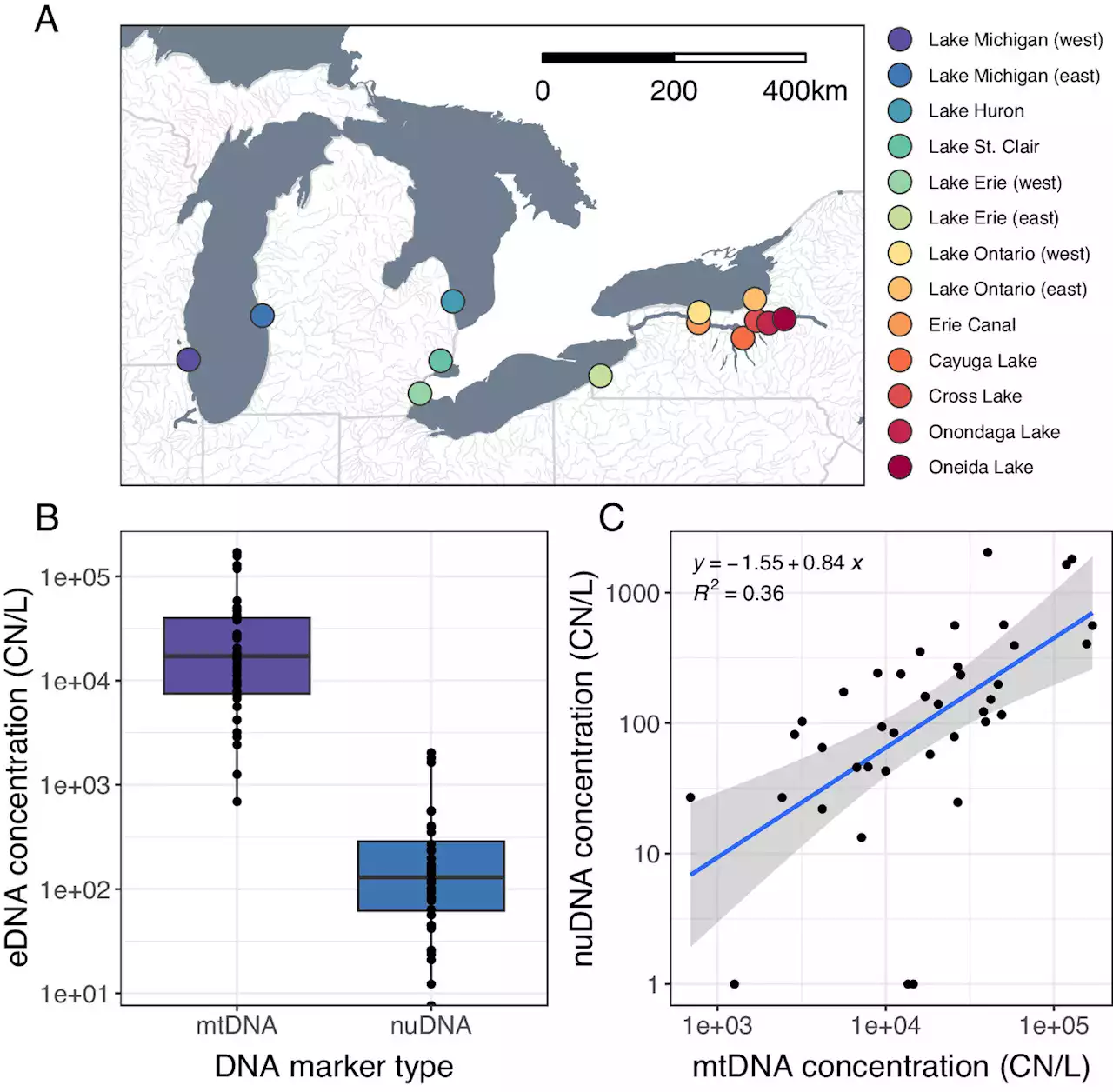Ecologists have demonstrated that the genetic material that species shed into their environments can reveal not only the presence of the species but also a broad range of information about the genetics of whole populations.
from round goby fish and eDNA samples of water the fish inhabited. They found that the two methods provided comparable genetic information.
In the cells of most animals, the nucleus contains two copies of the full genetic code, but each cell contains 100 to 1,000 copies of a smaller, stripped-down version of the genetic code in mitochondria. Most of the research on eDNA to date has focused on mitochondrial DNA, because it's likely much more abundant in environmental samples, Kara Andres said.
In their Great Lakes study, which involved collecting water and tissue samples from round goby fish in 13 locations from Lake Michigan to Oneida Lake, the researchers found that their eDNA sampling methodology can be used to detect nuclear genetic variations, making it possible to analyze genetic diversity and variation within species.
South Africa Latest News, South Africa Headlines
Similar News:You can also read news stories similar to this one that we have collected from other news sources.
 Environmental Action by Changing our MessageEnvironmental Action by Changing our Message, The urgency of implementing change nowFor decades, scientists have been warning
Environmental Action by Changing our MessageEnvironmental Action by Changing our Message, The urgency of implementing change nowFor decades, scientists have been warning
Read more »
 How Biden Is Bringing More Environmental & Climate Justice To The USEPA's Environment & Climate Justice program may have cracked the code to inclusively direct billions of federal funds to CBOs in marginalized communities.
How Biden Is Bringing More Environmental & Climate Justice To The USEPA's Environment & Climate Justice program may have cracked the code to inclusively direct billions of federal funds to CBOs in marginalized communities.
Read more »
 Trump’s 'Border Wall' Caused ‘Significant’ Cultural and Environmental DamageOne site important to a number of Indigenous communities, was “irreparably damaged.'
Trump’s 'Border Wall' Caused ‘Significant’ Cultural and Environmental DamageOne site important to a number of Indigenous communities, was “irreparably damaged.'
Read more »
 Man convicted in Massachusetts for a 1985 murder gets new trial due to new DNA evidenceThomas Rosa, a man who was convicted in 1993 of killing 18-year-old Gwendolyn Taylor, has been granted a new trial. New DNA evidence has cast doubt over his conviction.
Man convicted in Massachusetts for a 1985 murder gets new trial due to new DNA evidenceThomas Rosa, a man who was convicted in 1993 of killing 18-year-old Gwendolyn Taylor, has been granted a new trial. New DNA evidence has cast doubt over his conviction.
Read more »
 New method combines DNA nanoballs and electronics to enable simple pathogen detectionResearchers at Karolinska Institute have developed a novel method using DNA nanoballs to detect pathogens, aiming to simplify nucleic acid testing and revolutionize pathogen detection. The study's results, published in Science Advances, could pave the way for a straightforward electronic-based test capable of identifying various nucleic acids in diverse scenarios quickly and cheaply.
New method combines DNA nanoballs and electronics to enable simple pathogen detectionResearchers at Karolinska Institute have developed a novel method using DNA nanoballs to detect pathogens, aiming to simplify nucleic acid testing and revolutionize pathogen detection. The study's results, published in Science Advances, could pave the way for a straightforward electronic-based test capable of identifying various nucleic acids in diverse scenarios quickly and cheaply.
Read more »
